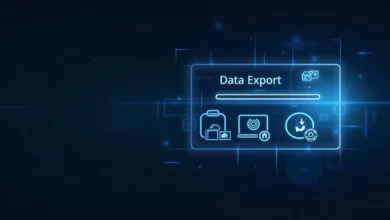How to Bench Power KPro: A Step-by-Step Guide for Beginners

If you’re serious about tuning, you know that sometimes you need to work with your KPro ECU outside of the car. But simply connecting a power supply isn’t always enough.
Yes! We know it might turn on. However, key functions may not work, which can be frustrating at times. To end this frustration, we’ve created this blog guide.
In this, we’ll guide you through the exact steps on how to bench power KPro. We’ll cover this topic from a beginner’s point of view. This way, even if you’re doing it your first time, you’ll still be successful. So, let’s delve into the details. Shall we?
Why Bench Powering a KPro ECU Matters
Before getting to the heart of the matter, let’s first try to understand the need to bench power a KPro ECU. So, in simple terms, you need to bench power it because doing so allows you to test the following things without installing it in a vehicle:
- Connectivity.
- Functionality.
But you can only do so with the right approach. And let us tell you, once you’ve figured out the correct way to bench power KPro, it can save you lots of time, regardless of whether you’re preparing a new calibration or troubleshooting an issue.
With that, you must also understand that ECU will undoubtedly power up, but its specific features may offer limited functionality. That’s mainly due to missing vehicle inputs.
What You’ll Need to Bench Power KPro
If you’ve followed this discussion from the beginning, you may have understood why you need to bench power KPro by now. If so, you’ll be now eager to get to its procedure. But wait!
Before starting, you need to gather some essentials to guarantee the seamless implementation of the whole bench power KPro setup. Here’s a list of those things:
- KManager software installed on your PC.
- Proper ECU pinout diagram (for correct wiring).
- A stable 12V–14V DC power supply.
- USB cable to connect the ECU to your computer.
Having these essentials reduces the risk of connection failures or power surges.
Step-by-Step Guide: How to Bench Power KPro
Now, let’s get to the business end of this blog post, which is the step-by-step procedure of bench-powering KPro. So, here is what you need to do:
Step 1: Set Up Your Power Source
First of all, you need to set your DC power supply between 12V and 14V. That’s mainly because of the following reasons:
- Anything lower than the aforementioned value may not be enough to power the ECU.
- Anything higher than the aforementioned power could damage the whole setup.
Step 2: Connect the Power and Ground Wires
Then, you need to find the correct battery input and ground pins on the KPro ECU. These are generally available in the ECU’s wiring diagram. So, once you’ve got these figured out, do the following:
- Connect the power supply’s positive (+) terminal to the ECU’s battery input.
- Connect the ground (-) terminal to the ECU’s ground pin.
Doing so will replicate the car’s electrical system, which will ultimately make sure that the ECU gets all the required power.
Step 3: Attach the USB Cable to Your Computer
Now, it’s time to use the reliable USB cable you may have picked and connect the ECU to your PC. After that, you need to check whether this connection is successful or not. To do so, you need to use KManager.
So, open this software on your PC and see if ECU appears online. If it does, congratulations; you’ve successfully connected and bench-powered KPro.
Step 4: Check ECU Connectivity
Once the connection is successful, check whether KManager recognizes the ECU or not. If it does, you will be able to do the following courses of action:
- Check error codes.
- Download the current calibration.
- View real-time data.
However, as we’ve already mentioned, some features may be disabled while bench-powering because the ECU lacks in-car signals.
Common Issues When Bench Powering KPro & How to Fix Them
The steps mentioned work perfectly in bench-powering KPro. But sometimes, their implementation results in different issues, such as the following:
1. ECU Powers On but Doesn’t Allow Uploads
This problem mainly occurs because the ECU doesn’t receive certain ignition signals that it expects when inside a car. So, if you face this issue, try the following fixes:
- Install the ECU in a vehicle for full functionality.
- Try using a Honda ECU test bench setup that provides simulated ignition inputs.
2. KManager Doesn’t Recognize the ECU
Sometimes, the KManager software doesn’t detect the ECU. So, in such situations, you can do the following:
- Double-check your power and ground connections.
- Ensure you’re using a functional USB cable.
- Restart KManager and reconnect the USB cable.
Final Thoughts on How to Bench Power KPro
In conclusion, we just want to say that knowing how to bench power KPro correctly is essential for any tuner working with Hondata ECUs. While this method lets you test connectivity and some ECU functions, it’s important to remember that full tuning and security erasing require the ECU to be installed in a vehicle. By following the steps outlined above, you can guarantee a successful bench power KPro process and avoid common issues.



